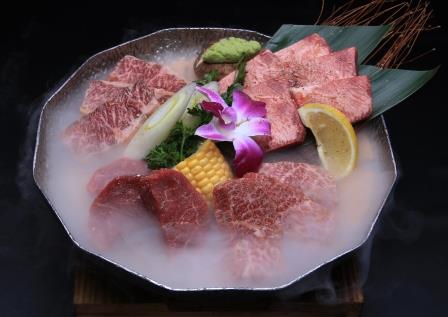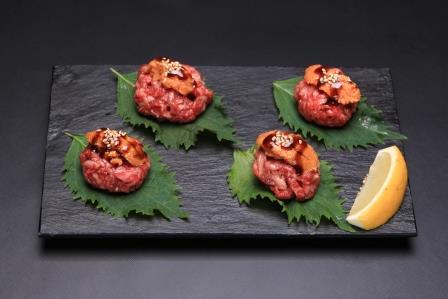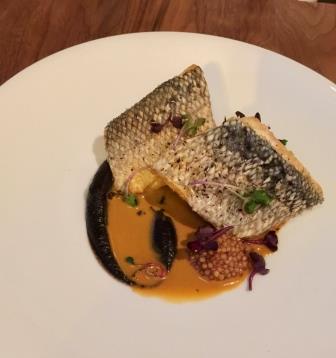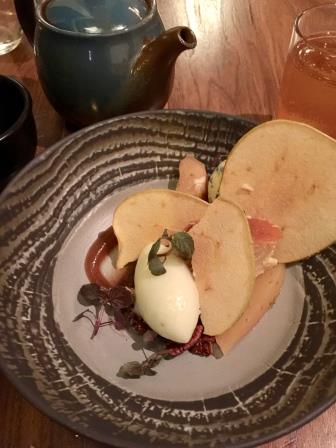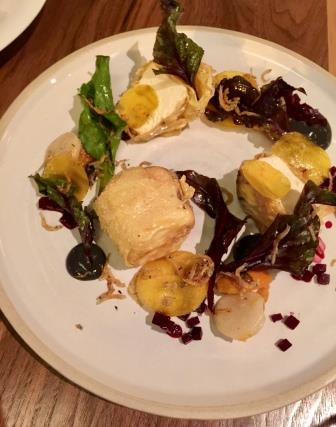Enjoy food with Japanese sake
By Yuji Matsumoto
Recently, I’m often asked from Americans, “Wine is often used for cooking, can you also use Japanese sake?” Japanese sake is great for cooking, because it contains many umami components for use in various ways.”
Eliminating Odor
Sake is useful to eliminate odor from pork, lamb, etc., although this odor may be characteristic for lamb. To flavor food while preparing Japanese cuisine, sprinkle sake over food when the odor is too strong and leave for two minutes to eliminate the odor.
Softens Proteins
Placing chicken breast, red beef, and meat for stew into a Ziploc bag with sake the day before use is effective in removing the dryness and making the meat delicious. Sake enhances great flavor to BBQ and yakiniku meat.
Adds umami flavors
The fact that sake is useful for cooking food in soy sauce to various soup dishes are known to many. Surprisingly, sake is also great for preparing western soup dishes, especially when using seafood. Adding sake further enhances flavors. Of course, sake is great for adding flavor to pasta and other dishes, so please give it a try.
Sake is great for cooking!
Cooking sake and Junmai sake is great for cooking! Ginjo, Daiginjo is great for enjoyment, but as for suitability for cooking, Junmai is better because of its high content of umami flavors. Furthermore, the prices are high, so it’s a waste to use such expensive sake for cooking.
料理に日本酒を
最近、よくアメリカ人から聞かれるのが、「ワインは料理に使うけど日本酒も使えるのか?」ということだ。日本酒には、ワインにない旨み成分がたくさんあるので何でも使用できるのがうれしい。
臭い消し
豚、ラムなどの匂いを消す効果がある。この匂いがあるからこそラム肉かもしれないが、和風な味つけにするときには、ちょっと匂いが強すぎる時に日本酒をかけ、約2分くらい放置すると臭みも消える。もちろん、魚介類にも効果がある。
タンパク質柔軟効果
鶏の胸肉や牛の赤身、シチュー用の肉を調理前日に日本酒を入れたジップロックバックに入れておくとパサパサ感がとれ美味しくなる。バーベキューや焼肉がもっと美味しくなるのだ。
旨味追加
煮付けからどんな汁物まで日本酒は使えるのは皆さんも周知の事実。意外にも洋食のスープ、特にシーフードの入れるもの日本酒を入れるとさらに美味しくなる。もちろんパスタやその他の料理にも使えるので試していただきたい。
実はインスタントラーメンに少し入れても美味しい。
料理に向く日本酒
料理酒や純米酒がよい。吟醸、大吟醸酒は飲むのには良いが、料理としての効能は旨みが多い純米酒がベターである。まして、値段が高いので料理に使うにはもったいない。
Recently, I’m often asked from Americans, “Wine is often used for cooking, can you also use Japanese sake?” Japanese sake is great for cooking, because it contains many umami components for use in various ways.”
Eliminating Odor
Sake is useful to eliminate odor from pork, lamb, etc., although this odor may be characteristic for lamb. To flavor food while preparing Japanese cuisine, sprinkle sake over food when the odor is too strong and leave for two minutes to eliminate the odor.
Softens Proteins
Placing chicken breast, red beef, and meat for stew into a Ziploc bag with sake the day before use is effective in removing the dryness and making the meat delicious. Sake enhances great flavor to BBQ and yakiniku meat.
Adds umami flavors
The fact that sake is useful for cooking food in soy sauce to various soup dishes are known to many. Surprisingly, sake is also great for preparing western soup dishes, especially when using seafood. Adding sake further enhances flavors. Of course, sake is great for adding flavor to pasta and other dishes, so please give it a try.
Sake is great for cooking!
Cooking sake and Junmai sake is great for cooking! Ginjo, Daiginjo is great for enjoyment, but as for suitability for cooking, Junmai is better because of its high content of umami flavors. Furthermore, the prices are high, so it’s a waste to use such expensive sake for cooking.
料理に日本酒を
最近、よくアメリカ人から聞かれるのが、「ワインは料理に使うけど日本酒も使えるのか?」ということだ。日本酒には、ワインにない旨み成分がたくさんあるので何でも使用できるのがうれしい。
臭い消し
豚、ラムなどの匂いを消す効果がある。この匂いがあるからこそラム肉かもしれないが、和風な味つけにするときには、ちょっと匂いが強すぎる時に日本酒をかけ、約2分くらい放置すると臭みも消える。もちろん、魚介類にも効果がある。
タンパク質柔軟効果
鶏の胸肉や牛の赤身、シチュー用の肉を調理前日に日本酒を入れたジップロックバックに入れておくとパサパサ感がとれ美味しくなる。バーベキューや焼肉がもっと美味しくなるのだ。
旨味追加
煮付けからどんな汁物まで日本酒は使えるのは皆さんも周知の事実。意外にも洋食のスープ、特にシーフードの入れるもの日本酒を入れるとさらに美味しくなる。もちろんパスタやその他の料理にも使えるので試していただきたい。
実はインスタントラーメンに少し入れても美味しい。
料理に向く日本酒
料理酒や純米酒がよい。吟醸、大吟醸酒は飲むのには良いが、料理としての効能は旨みが多い純米酒がベターである。まして、値段が高いので料理に使うにはもったいない。





